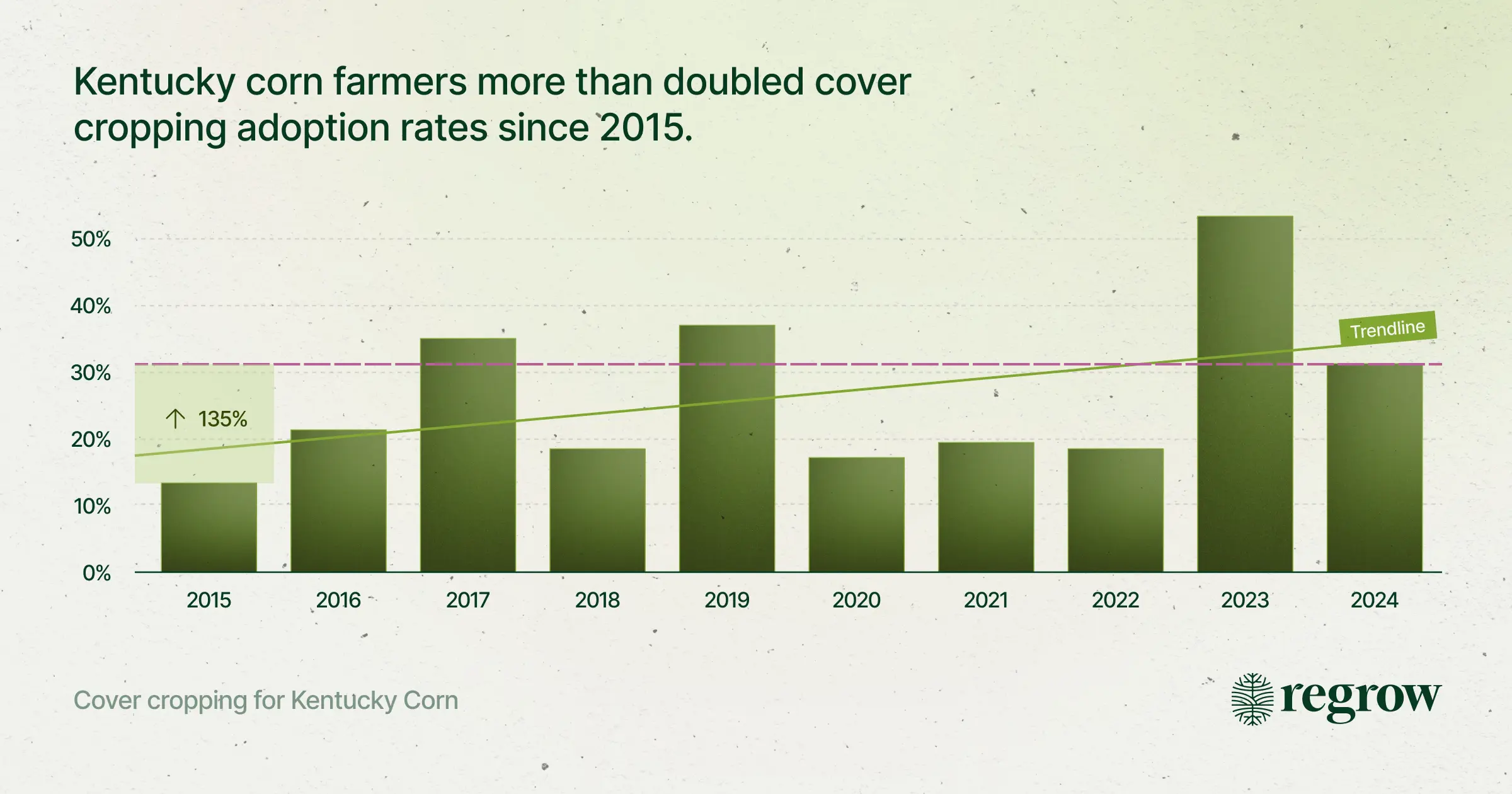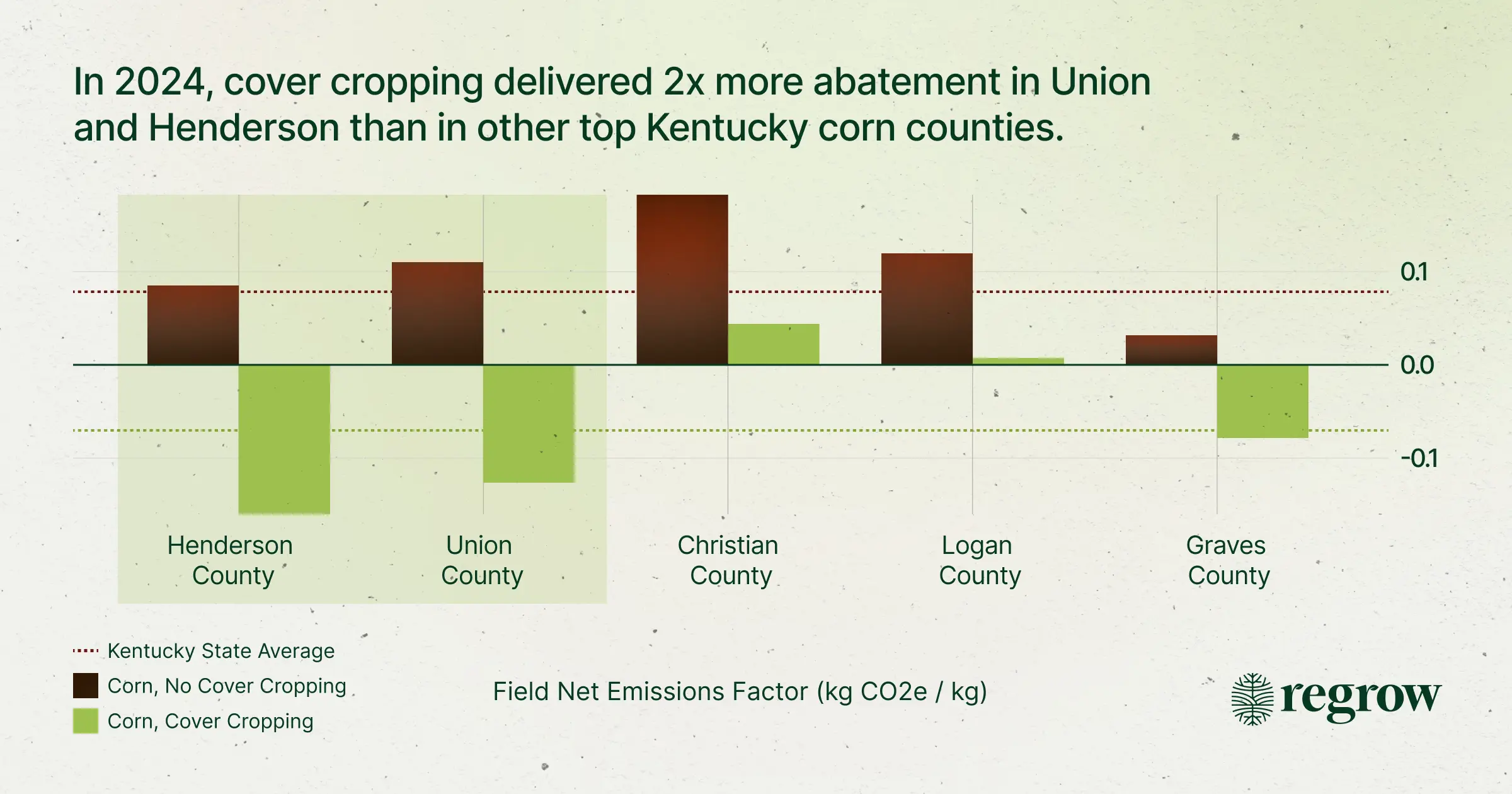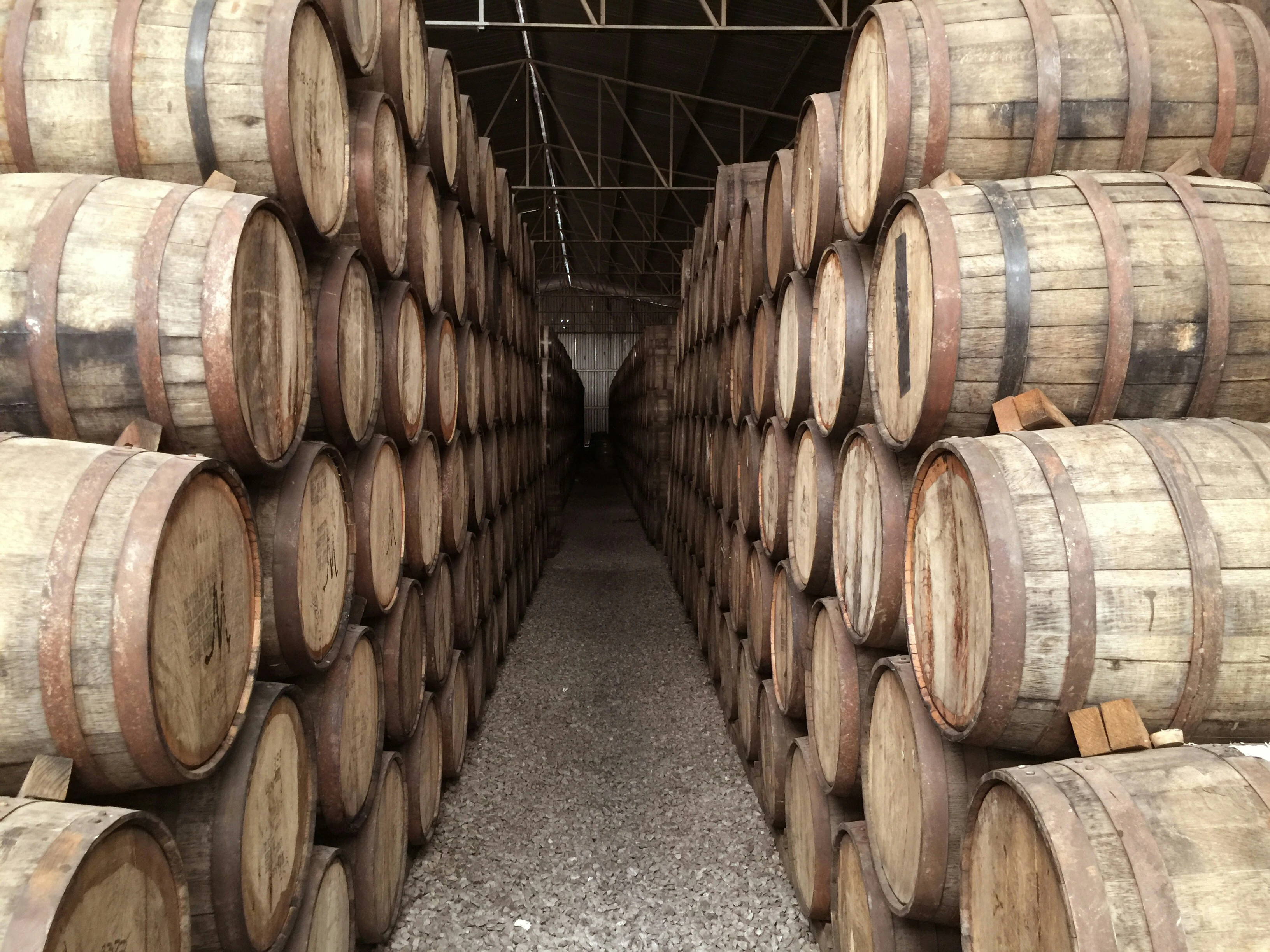A recent report from The Nature Conservancy (TNC) highlighted efforts by bourbon distillers to reduce Scope 3 emissions by incentivizing regenerative agriculture in their supply sheds. TNC cites corn as the single largest agricultural input in bourbon, constituting ~9% of every bottle’s carbon footprint.
While the report encouraged the industry to promote more cover cropping in bourbon’s supply sheds (predominantly Kentucky corn), it also highlighted the need for more research into the impact of cover cropping on emissions in this region.
We did the research, analyzing more than 500,000 hectares of corn cropland in Kentucky to answer that question.
How has cover crop adoption changed for Kentucky corn growers?

Our data show a significant increase in cover cropping adoption over the past decade by Kentucky corn growers. A joint partnership between four distillers (Brown-Forman, Diageo North America, Heaven Hill Brands, and Suntory Global Spirits) and Precision Conservation Management (PCM) and Kentucky Corn Growers Association was established to promote cover cropping across the state. A spike in cover cropping practices in 2023, reaching 53% of corn acreage, shows success promoting this practice thus far.
However, a portion of that progress reversed in 2024. This may be due to it being a soy rotation year (our data on the total amount of corn hectares planted in 2024 supports this, as hectares decreased roughly 50%). Cover crops can be harder to establish for soy because it’s harvested later in the fall, leaving less time for seeding before winter. This year’s cover cropping rates will help clarify if this is cyclical or a broader trend.
These data show the impact of providing grower incentives for cover cropping in Kentucky corn. Cover cropping is not without its costs for farmers, and the proper financial incentives and long-term commitment from downstream buyers are necessary to support this transition.
With the aforementioned regenerative investments from the four major companies (Brown-Forman, Diageo North America, Heaven Hill Brands, and Suntory Global Spirits) and boots-on-the-ground partners, cover cropping should continue to grow.
Why is this important? Because landscape-level change can help reduce emissions across the board and set a standard for corn production in other regions.
How does cover cropping impact emissions for Kentucky corn?
Cover cropping is proven as a practice that helps increase soil health, reduce emissions, and boost resilience. Its impact on emissions will vary greatly depending on the local environment, which is why it’s important to use supply-specific data to ensure you’re incorporating local context (e.g. soil type and weather patterns) into your emissions reporting.
Across the 500,000 hectares of corn cropland in Kentucky this past year, we wanted to answer the following question: How did emissions compare between farmers who did cover crop and those that did not cover crop?

The result: In 2024, Kentucky farmers who cover cropped turned corn into a net carbon sink. Taking this one step further, rolling out a 50,000 hectare cover cropping program in Kentucky would yield in the range of 80,500 tCO₂e abatement (greenhouse gases avoided or removed) - and this estimate does not include additional benefits from other practices such as nutrient management.
If we put this into a corporate context, Beam Suntory’s 2019 baseline for total emissions (Scopes 1–3) was 940,067 tCO₂e. Their 2030 target is to cut that by 30%, which means reducing emissions by about 282,020 tCO₂e. An 80,500 tCO₂e reduction from cover cropping would deliver roughly 28.5% of that total Scope 1-3 reduction target.
Where could cover cropping scale further in Kentucky?
Cover cropping delivers real impact, but sustainability leaders face a key question: where in my supply shed should I invest to maximize ROI?
To find answers, we used Regrow’s Sustainability Insights data scenarios to create two grower profiles in five of Kentucky's top corn-producing counties to compare the difference in emissions from corn farmers who use cover crops and those who didn’t.

Two counties stand out in this chart - Union and Henderson. They have the largest difference in corn emissions between farmers practicing cover cropping and those that did not. In 2024, farmers in these counties who implemented cover cropping provided roughly double the emissions abatement as cover cropping farmers from other counties.
There are a number of reasons why cover cropping has a greater impact on emissions in these two counties, including different soil types and local environmental conditions. It’s worth noting that Union and Henderson counties are located in the far NW corner along the Ohio River where soils may see greater cover crop benefits because their location brings wetter conditions and soils that are more prone to nutrient loss when left bare.
If conventional corn farmers in just Henderson and Union counties adopted cover crops on half of their non-cover-cropped acres in 2024, the result would be about 60,000 tCO₂e/year in abatement. Thinking back to our example with Beam Suntory, this impact would be enough to deliver 21% of Beam Suntory’s entire Scope 1-3 reduction goal.
How does this impact sustainability goals for companies in the bourbon industry?
The data show that cover cropping is a measurable, high-impact pathway for cutting supply chain emissions. The 53% peak adoption rate in 2023 demonstrates a willingness to adopt cover crops when incentives align, and yet with adoption still below 50% in top-producing counties, the opportunity for expansion is there.
Our county-level analysis demonstrates that by concentrating incentives and investment where they’ll yield the greatest returns, sustainability teams can yield double the emissions impact in their supply chains.
Want to see how cover cropping impacts emissions in your supply chain? Regrow's field-level emissions data helps teams from 40% of the largest food, beverage, and agriculture companies map, analyze, report, and act on emissions in their supply chains.



